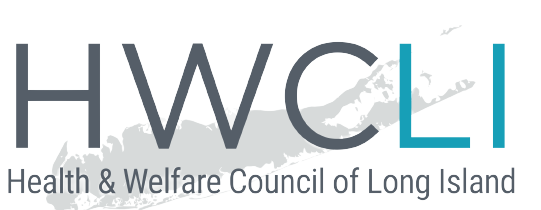Report: Expand child tax credit to cut NY’s 13.9% poverty rate
By Olivia Winslow
Updated December 8, 2022
Read on Newsday
ew York’s poverty rate was higher in 2021 than the national average, according to a report released Thursday by state Comptroller Thomas DiNapoli that called for “greater equity” of benefits and expansion of a child tax credit that helped many families weather income losses during the pandemic shutdown.
Citing U.S. Census data, the report, “New Yorkers in Need: A Look at Poverty Trends in New York State for the Last Decade, ” noted that New York’s poverty rate was 13.9%, or 2.7 million people, in 2021, higher than the national average of 12.8%. New York had the 13th highest poverty rate among all states, the report said.
Nassau County recorded a poverty rate of 5.7% last year while in Suffolk, it was 6.1%, according to the report.
In an interview, DiNapoli said: “I think one of the main takeaways from the report is the percentage of the population living in poverty in New York is higher than the average for the rest of the country and higher than our neighboring states and most large states.”
What to know
- New York’s poverty rate, based on U.S. Census Bureau estimates, was 13.9% in 2021, or nearly 2.7 million people, higher than the national average of 12.8%.
- Nassau County recorded a poverty rate of 5.7% last year while in Suffolk, it was 6.1%,
- The state poverty rate for Black, Hispanic and other minority groups was at least twice as high in 2021 than for white New York residents.
According to the report, poverty rates for New York’s 62 counties ranged from lows in Nassau and upstate Putnam, which also came it at 5.7%, to 24.4% in the Bronx. Overall, 34 counties had rates under 12%; 11 counties had rates from 12% to under 13%; and 17 counties had rates greater than 13%.
DiNapoli added that even though Nassau’s poverty rate was low, “if you’re in that 5.7%, there’s still need there.”
The pandemic had “devastating health, economic and social consequences,” DiNapoli said in his message contained in the 44-page report, with the 2020 shutdown leading to almost 2 million job losses statewide.
“Yet for many,” he added, “economic hardships existed long before this time; the pandemic deepened the financial stress experienced by these households.”
The poverty report is the first in a series “examining New Yorkers in need” that will also look at food insecurity, housing and health care, DiNapoli said.
According to the report, “Black, Native Hawaiian and Other Pacific Islander and American Indian New Yorkers experience poverty at twice the rate of White New Yorkers, 20% or more compared to 10%, respectively, in 2021. Similarly, poverty rates are more than double for Hispanic New Yorkers compared to White, non-Hispanics.”
The comptroller’s findings included recommendations for the federal government’s role in reducing poverty:
- “Continue to evaluate alternative poverty measures, and update them as necessary to allow for accurate assessment of need and modern living standards.”
- “Assess current programs for potential improvements, including the adequacy of benefit amounts and flexibility in local administration.”
- *Continue and expand effective interventions that have demonstrated a meaningful reduction in poverty. Pandemic-era enhancements to the Child Tax Credit produced meaningful reductions in poverty and should be continued.”
DiNapoli praised state officials in the report for setting a goal of reducing child poverty by 50% and establishing the Child Poverty Reduction Advisory Council, but said they should make poverty reduction a “cross-agency priority.”
The comptroller also called for the state to commit to “greater equity” in state services to target resources to communities most in need.
Paule Pachter, chief executive of Long Island Cares — The Harry Chapin Food Bank, noted the plethora of data contained in the report and feared people might get “confused” by the amount of detail.
When using words like ” ‘continue to evaluate alternative measures’ … it’s very broad, in terms of the recommendations,” Pachter said.
Nevertheless, he added, DiNapoli’s report accurately outlines poverty in New York.
What would most help to alleviate poverty in the state and elsewhere, Pachter said, would be an update to the federal poverty threshold — $27,479 for a family of four in 2021 — that would take into account regional cost differences.
Asked about DiNapoli’s report, Rebecca Sanin, president and chief executive of the Health and Welfare Council of Long Island, said in an email: “We know that the definition of poverty does not describe need on Long Island. About [one-third] of families struggle to meet basic survival budgets and need has deepened since COVID-19 destabilized the economic approach of so many households.”
Sanin continued: “I agree strongly with the Comptroller’s recommendation to advance measures that are cost-adjusted and reflect and respond to accurate measures of need.”
She also called for expanding the Child Tax Credit, “which was effective and smart policy and should be reconsidered.”
Recent Posts
April 12, 2024
U.S. Census: Long Island children under 5 undercounted at rate higher than nationwide
March 8, 2024
February 14, 2024
Categories
- 2020 Census 9
- Coalitions 4
- COVID-19 10
- Direct Services 3
- HEALI 2
- Health Equity 2
- Healthcare Access 5
- HWCLI 67
- LIVOAD 9
- Press Release 2
- Uncategorized 5
- Weekly Digest 3
Join us in creating a future for Long Island in which everyone has an equal opportunity to prosper and thrive.
Join Our Network
Subscribe to Our Newsletter
Copyright ©2024 HWCLI. All Rights Reserved. Designed by FBC
